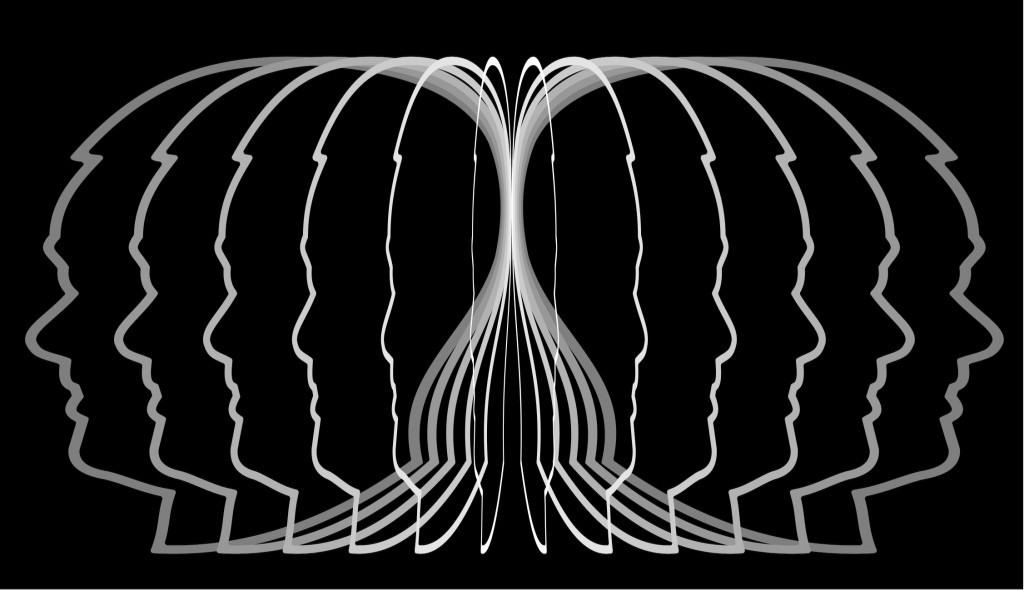
Psychotic episodes, which underlie severe disorders like schizophrenia, are typically prefigured by a ‘prodromal’ phase. The prodrome of schizophrenia will likely include psychotic symptoms such as hallucinations and delusions, but they will be relatively low in frequency and intensity, increasing over time until they become clinically relevant.
Alternatively, some people experience neither prodromal symptoms nor a psychotic episode, but rather something in between. Such individuals will have clinically relevant psychotic symptoms, but of a variable (polymorphic) nature. Secondly, the onset of symptoms will be sudden, occurring in a space of 2 weeks or less, and will resolve within 1 to 3 months. Finally, their symptoms will be associated with the presence of highly stressful events like psychological trauma, the loss of a loved one etc (Garrabé & Cousin, 2000), but not substance abuse.
This atypical ‘third psychosis’ has been historically described in a variety of ways, most notably in France as a ‘bouffée délirante’; literally, a ‘puff of madness’ (Magnan, 1891). In the International Statistical Classification of Diseases (ICD-10), the more widely used counterpart of the better known Diagnostic & Statistical Manual of Mental Disorders (DSM V), these different clinical features are grouped under the banner of Acute and Transient Psychotic Disorders (ATPD).
ATPD is a composite category of disorders, and according to the World Health Organization, its validity is not as well established as other psychotic disorders (World Health Organization, 1992). One way of establishing its validity as a diagnostic concept is to measure the ability of ATPD to predict transition to a diagnosis of schizophrenia.
In a paper recently published in the British Journal of Psychiatry, Filippo Queirazza and colleagues present their attempts to record the rate of transition from ATPD to schizophrenia, along with the average time to transition. Furthermore, their aim was to examine any mediating effects of demographic and clinical measures (age, gender, age at onset of illness etc).

The authors suggest that this is the first study to investigate mean time to change in diagnosis from acute and transient psychotic disorder to schizophrenia
The authors summarise that:
To the best of our knowledge, no previous study has ever estimated mean time to change in diagnosis from ATPD to schizophrenia. This knowledge could potentially contribute to better planning and design of first-episode psychosis services in the UK.
Methods
Principal methodology involved accessing the Scottish Morbidity Record 4 (SMR4), and selecting for first-ever admissions for ATPD between 1st January 1997 and 31st December 2010, thus covering a maximum follow-up period of 13 years.
To examine the length of time participants took to transition from initial diagnosis of ATPD to schizophrenia or any new diagnosis other than recurrent ATPD, a Kaplan-Meier survival analysis was used. The advantage of this method is it can account for partially missing data, a common occurrence in longitudinal population studies. Additionally, factorial analyses of variance were used to calculate the average age and length of first admission.
Results
- The final sample included 2,923 cases (1,593 men and 1,330 women) of first-admission in-patients with a diagnosis of ATPD, and a total of 8,265 hospital readmissions
- The average incidence of ATPD was 4.1 per 100,000 population per year
- Mean length of follow-up was 4 years (s.d.= 3.97), with a diagnostic stability of 53.9% for ATPD over this time-period
- Mean age at first admission was 37.4 years (s.d.= 17.7) and mean length of first admission was 34.8 days (s.d.= 138.5)
- Schizophrenia was the most common diagnostic shift (12.6%), equivalent to one in eight individuals with a first-ever diagnosed ATPD later being reclassified as having schizophrenia, over an average of 1.7 years
- The estimated mean time to any diagnostic shift from first-episode ATPD was 7.6 years
- Male gender and younger age at first admission were significantly associated with increased risk and earlier onset of schizophrenia
- Longer first admission was also related to later diagnostic shift to schizophrenia, but this trend was non-significant
- A multitude of diagnostic changes were recorded in addition to schizophrenia, although 46.3% of the sample were never readmitted
- 7.6% went on to have recurrent episodes of ATPD. Second to developing schizophrenia (12.6%), this was the most likely outcome

This study suggests that approximately 1 in 8 people with first-ever diagnosed acute and transient psychotic disorders will go on to develop schizophrenia within 3-5 years
Conclusion
The authors conclude that:
In this seemingly heterogeneous population of ATPD, there seems to be clinical (longer first admission to hospital) and demographic (young age at onset and male gender) variables that are associated with increased risk and earlier development of schizophrenia. Monitoring over a follow-up period of around 3-5 years may therefore be warranted in order to confirm or exclude a diagnosis of schizophrenia.
Discussion
According to these findings, the time from first-episode ATPD to the onset of schizophrenia averaged at 1.7 years, with younger men and those with longer first admissions at greater risk. The authors are right to focus on transition to schizophrenia specifically, so as to benefit future early intervention strategies.
On the other hand, only 12.6% of those with first-episode ATPD went on to develop schizophrenia, and by far the largest proportion of the sample had a single episode with no later readmission (46.3%). This outcome is interesting when one considers the continuum view of psychosis, which includes benign symptoms as well as quickly remitting acute states. This finding also compliments recent meta-analyses which show a higher prevalence of psychotic experiences than the incidence rate of psychotic illness in the general population (Linscott & Van Os, 2012).
Crucially for the construct of ATPD though, this heterogeneity in diagnostic transition over time reflects poor diagnostic stability (53.9% over approximately 4 years, including patients presenting with recurrent (7.6%) and mono-episodic (46.3%) ATPD), a finding echoed in previous studies across Europe (Castagnini et al., 2008; Jørgensen et al., 1997; Marneros et al., 2003; Singh et al., 2004). The authors acknowledge that their data suggests the criteria for first-episode ATPD are of limited clinical value, lacking in predictive diagnostic power.
Based on this and similar evidence, the authors indicate that future revisions to ATPD criteria will likely relocate what is predictive of later schizophrenia onset to another ICD category (‘other primary psychotic disorders’), retaining what remains for the revised definition of ATPD.
The periodic rejigging of diagnostic criteria is likely to carry on as studies like this continue to examine unique cohorts of participants not often represented in schizophrenia research. Ultimately, the more heterogeneous our picture of psychosis becomes, the more difficult it may be to integrate it neatly into a categorical framework like the ICD-10 or DSM-V.

The classification of disease and disorders remains one of the most challenging and controversial aspects of mental health care
Limitations
- It would be interesting to measure other potentially mediating variables (e.g. socioeconomic status, drug use) beyond basic demographic (age, gender) and clinical (age at onset) ones. Of course, the authors were constrained to using available databases which rarely include such information
- The authors acknowledge that since the available data was limited to inpatient wards only, the lack of outpatient data could have resulted in an underestimation of the incidence of ATPD
- The authors also acknowledge that mental health records often contain misdiagnoses, meaning the diagnostic stability rate of ATPD may have be overestimated
- Another limitation put forward by the authors is that information was missing regarding whether onset of symptoms fell within 48hrs or 2 weeks, as the former has been linked be associated with higher diagnostic stability
- There was considerable variation in follow-up length, so the 7.6 years to any diagnostic shift the authors found is an estimate that accounts for missing data. While Kaplan-Meier analysis is commonly used for just such a purpose, it is generally bad to estimate beyond the observed data. Hence, a longer follow-up period would have been preferable
Links
Queirazza F, Semple DM, Lawrie SM (2014). Transition to schizophrenia in acute and transient psychotic disorders. Br J Psychiatry. 2014 Apr;204:299-305. doi: 10.1192/bjp.bp.113.127340. Epub 2013 Dec 19. [PubMed abstract]
Castagnini, A., Bertelsen, A., & Berrios, G. E. (2008). Incidence and diagnostic stability of ICD-10 acute and transient psychotic disorders. Comprehensive Psychiatry, 49(3), 255-261. [PubMed abstract]
Garrabé, J., & Cousin, F. (2000). Acute and transient psychotic disorders. Oxford Textbook of Psychiatry, 2, 644-649. [Abstract of 2012 edition]
Jørgensen, P., Bennedsen, B., Christensen, J., & Hyllested, A. (1997). Acute and transient psychotic disorder: a 1‐year follow‐up study. Acta Psychiatrica Scandinavica, 96(2), 150-154. [PubMed abstract]
Linscott, R., & Van Os, J. (2013). An updated and conservative systematic review and meta-analysis of epidemiological evidence on psychotic experiences in children and adults: on the pathway from proneness to persistence to dimensional expression across mental disorders. Psychological Medicine, 13. [PubMed abstract]
Magnan, V. (1891). Leçons cliniques sur les maladies mentales faites a l’Asile clinique (Sainte-Anne): aux Bureaux du Progrès Médical.
Marneros, A., Pillmann, F., Haring, A., Balzuweit, S., & Blöink, R. (2003). Features of acute and transient psychotic disorders. European Archives of Psychiatry and Clinical Neuroscience, 253(4), 167-174. [Abstract]
Singh, S. P., Burns, T., Amin, S., Jones, P. B., & Harrison, G. (2004). Acute and transient psychotic disorders: precursors, epidemiology, course and outcome. The British Journal of Psychiatry, 185(6), 452-459.
The ICD-10 classification of mental and behavioural disorders: clinical descriptions and diagnostic guidelines (PDF). World Health Organization, 1992.


RT @Mental_Elf: Acute and transient psychotic disorders: the ‘third psychosis’ and its relation to schizophrenia http://t.co/Ts6bVjTwbG
Acute and transient psychotic disorders: the ‘third psychosis’ and its relation to schizophrenia: Raphael Unde… http://t.co/OwnDPg08Bs
@Mental_Elf everyone has hang-ups, logical failures, distortions. Is the average person 5-10% insane? I think so
Kirsten Corden liked this on Facebook.
@raphunderwood summarises a Br-J-Psych paper on transition to schizophrenia in acute & transient psychotic disorders http://t.co/O8kLolxaCf
Acute and transient psychotic disorders: the ‘third psychosis’ and its relation to schizophrenia… http://t.co/6XJ5D5m9bK
Hampshire Healthcare Library Service liked this on Facebook.
Katie Simpson liked this on Facebook.
Mental Elf: Acute and transient psychotic disorders: the ‘third psychosis’ and its relation to schizophrenia http://t.co/oNcNblmz0h
1 in 8 ppl with first-ever dx acute & transient psychotic disorder will develop schizophrenia within 3-5 years http://t.co/O8kLolxaCf
The Mental Elf liked this on Facebook.
The periodic rejigging of diagnostic criteria. Read @raphunderwood’s blog on acute & transient psychotic disorders http://t.co/O8kLolxaCf
Acute and transient psychotic disorders: the ‘third psychosis’ and its relation to schizophrenia – The Mental Elf http://t.co/9HcdenLR1l
Don’t miss – Acute and transient psychotic disorders: the ‘third psychosis’ and its relation to schizophrenia http://t.co/O8kLolxaCf
@Mental_Elf Hi Elf. Think point 3 on limitations is interesting. ATPD seems to be a ‘working diagnosis’ (hypothesis)-May mean not robust!
@Mental_Elf Depends what you mean by ‘schizophrenia’. Why not just go with differing psychotic experiences?
Interesting journal on psychotic illness by @Mental_Elf http://t.co/SYMSvOiAGa have a read
HOSPITALS + IATROGENIA:Acute and transient psychotic disorders:third psychosis’ and its relation to schizophrenia http://t.co/R8W1pRv86k
Andrea Brennan liked this on Facebook.
Carina Kirby liked this on Facebook.
‘third psychosis’ and its relation to schizophrenia: why is an unscientific diagnosis still used in research?! http://t.co/QAVIaevW0H
It’s nip & tuck this week, but our most popular blog is @raphunderwood on Acute & Transient Psychotic Disorders http://t.co/Ts6bVjTwbG
Andrea Brennan liked this on Facebook.
Carina Kirby liked this on Facebook.
The Mental Elf liked this on Facebook.
Hampshire Healthcare Library Service liked this on Facebook.
Katie Simpson liked this on Facebook.
Kirsten Corden liked this on Facebook.
[…] a paper in Br-J-Psych on transition to schizophrenia in acute and transient psychotic disorders Download Acute and transient psychotic disorders: the ‘third … | […]
I have had this disorder for nearly 14 years now
Why does it say
“Schizophrenia was the most common diagnostic shift (12.6%), equivalent to one in eight individuals with a first-ever diagnosed ATPD later being reclassified as having schizophrenia, over an average of 1.7 years”
then in the overview that this is 3- 5 years?! Please explain!
Thank you
What is the treatment ? For transient pyschosis